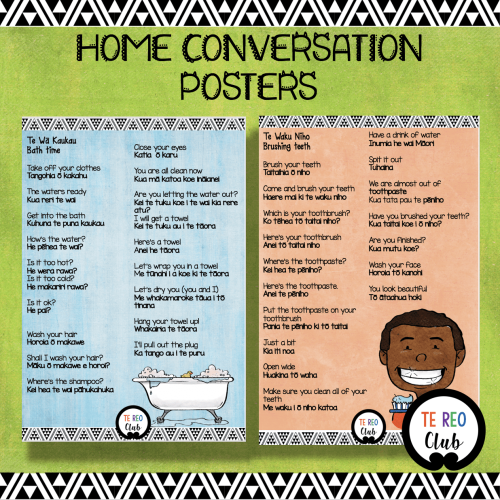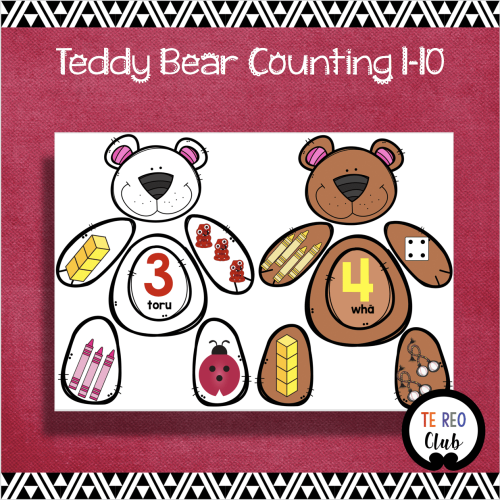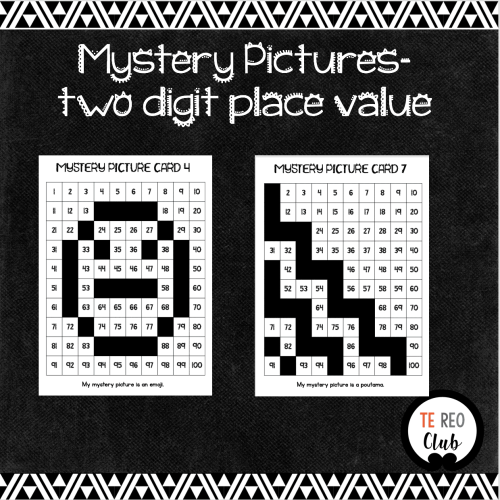The Māori language is slowly but steadily becoming mainstream across the country. Hence, my strong conviction to be a part of its progress which led me to creating Te Reo Club. But you may be asking: Why do you care much about it? What led you to creating Te Reo Club?
It was a rainy cold, miserable winter day in West Auckland. My friend and I had decided to meet for lunch in town (town being Glen Eden). I picked her up from where she was working at the Library and we set off to a little local café to indulge in some high carb, high fat, high-calorie soul food.
What my friend and I have in common is that we have both been learning te reo Māori for a looooong time and we like to get together for a kōrero whenever we can.
While looking at the delicious kai, I saw another familiar face enter the café. We exchanged “Kia ora” greetings and “Kei te pēhea koe?” How are you? and “Kei te aha koe?” What are you up to?
I introduced my friends to each other and they exchanged salutations in te reo Māori.
The three of us were talking and laughing deciding on which kai we would choose when….
Enter, another familiar face. I couldn’t believe it! This gorgeous rangatahi (young man) was a friend of my tamariki. They had all attended the same kura (school).
“Kahukura! Kia ora”.
We all stood there laughing and having a simple conversation in te reo. Another customer walked into the wharekai (cafe) and we were unaware of her listening to us.
“This is so great, to hear you all conversing in Māori!” she said. “It’s amazing!”
This was a very memorable moment for me and one that has kept me on this huarahi (road) of learning te reo and helping others to attain more reo.
Before we departed we all exclaimed what an amazing thing it was. None of us live in a community, or work in a space of total immersion of the reo, yet here we all were, conversing with what reo we had. It was magic. He wheako rawe tēnā! (That was an amazing experience.)
There was some bumbling, and probably not all the conversation was grammatically correct, but it showed me what was possible. We all talked about how the sausages looked nice and chubby, the mashed potato would be nice with the gravy and we’d better hurry up or else we’d be late back.
That is my hope for all of us. In a “mainstream” setting, everywhere, in shops, wharekai (cafes) schools, on the street, we will be conversing in and out of te reo to the best of our ability.
We can’t rely totally on schools, we need to be doing what we can in our own kāinga (homes) to teach the Māori language. Even if it were to become “compulsory” in schools, we are a long way off it being mainstream conversation.
There is one big maunga teitei (mountain) in front of most of us. The mountain of fear. Our fear of being wrong, or mispronouncing words and looking silly. I totally get that and that is a taniwhā we have to patu (beat). We often ask our tamariki to do things they are not 100% confident about doing and expect them to “just do it!”
This wheako (experience) helped cement my mission with this new pae tukutuku (website). I felt I needed to make more available to more people.
Firstly, we have resources which start with the basic building blocks of learning the Māori language. From learning the alphabet to using common phrases and sentences, we’ve got you covered. Moreover, they are made with real-life contexts in mind, with kīanga (phrases) you will repeat daily. The more you repeat the better you get! Choose phrases you use in English everyday. For example-
“Tukua te wai! “Flush the toilet!
ConvertKit Form
Also, we have resources to help families make Maori their language at home. You can start by naming or labelling items at home using te reo. Our resources are designed not only for children to enjoy, but also for adults as well. We are here to help you make learning te reo worthwhile for the whole whānau.
While Maths isn’t everyone’s cup of tea, we have been deliberate in the development of our rauemi (resources). The aim has been to find fun activities so learning is just a consequence of completing a fun activity.
Nothing could be easier than learning how to count in Māori; you’ll be surprised by the fact that once you learn numbers 1-10, the rest is quite easy.
Māori Language In the Home
My biggest joy is to be offer this club at an affordable price for whānau and institutions.
How do I use this?
I’m a Parent/Care-giver. How will te Reo club help me in teaching the Māori language to my child?
- Labels-Label objects around your house to remind you of the ingoa Māori (Māori name)
- Cards-Match these words as 3-way cards (helps with reading, writing and identification)
- Phrases-Learn phrases to converse with your whānau (posters or as door hangers for each room)
- Make/learn simple sentences, the building blocks, with interchangeable pieces
- Posters-Decorate your rooms with Alphabet (arapū) posters
- Templates-Use some of our templates with your tamariki to help them with school presentations
- Worksheets (fun to do even when you know the answers:-)
- Maths Worksheets-Cheat sheets
- Tāima-Learn how to tell the time
- Crafts-You can download some cool wee books for your tamaiti (child) to make and lessen their “device” time. (Cutting, colouring and writing are important skills!)
Plus-because we have a promise of uploading 10 new resources every month, you will be able to have a say in what you would like.
So far, many of the resources made are from YOUR suggestions of what YOU wanted.



My vision is to have a one-stop place for school quality CREATIVE, teacher-made and designed resources. These resources are:
- designed by people who are kaiako Māori and second language learners of te reo
- designed for different learning styles in mind
- fun, with different curriculum topics in mind
and in context with the way learners learn.
Here at Te Reo Club, variety is the name of the game. As much as possible, we want to give you as many kinds of resources to cater to the varied interests of tamariki and learning styles while working towards supporting whānau to increase their reo. Our resources can be used by whānau, kaiako, early childhood centres, libraries, and even workplaces. Thanks to those Libraries who are using them. (I has been lively seeing hem in libraries:-)
Māori Language In the Akomanga (Classroom)
In my job as a facilitator in Mainstream School settings, I constantly find myself repeating the same mantra “We need to “normalise” te reo in EVERY subject and area of our practice”.
To do this resource makers need to be offering some aspect of te reo in every resource which is produced. No matter what the topic. If we expect kaiako to be using more reo, we need to provide more reo in context!
Gone are the days of the “Te reo Māori Lesson ONLY”. Whether its Maths, Literacy, Science Inquiry, ART-It doesn’t matter. It is really easy to have a small part of te Ao Māori/Te Reo integrated throughout your learning space, topics and curriculum.
Even with your labels in the classroom. Are you using them? Do they just give the name of the object? Do they give you sentence starters of how you can use these kupu? (words). Think about your investment, the money and TIME you have spent on your resource and what goes on your walls. It needs to be more than just a bi-lingual label.
One of the things I learnt while completing a paper in second language learning pedagogy is that there are specific roles for your L1(first language) and L2 (second language). These resources take into account that we rely heavily on our first language to learn our second. So you will notice that most are bi-lingual, or the English is visible somewhere on the page. (Rod Ellis has some great articles and books on Second Language Acquisition)
While the advent of technology has changed the scape of learning in the 21st century, some things haven’t really changed at all. Inarguably, printable resources are indispensable in classrooms and practical for families. Even if you are trying to reduce paper, it can be very purposeful.
To process information brain research indicates that taking notes and writing is more effective than writing digitally. Apparently “taking notes and writing forces the brain in some heavy “mental lifting”, and these efforts foster comprehension and retention”
Te Reo Club was built on this premise – as a place where families and teachers alike can get resources and ideas to further strengthen the use of te reo Maori both at home and in schools in a useful, holistic way.
A friend of mine conducted a test with her Year 6’s. They appeared to be very competent at most of level one of the Māori Curriculum. The test was written where the kaiako asked how do you say hello in Māori etc. She was horrified at the spelling of the kupu, or should I say mis- spelling. But it was because writing had never been part of the activities and learning. The mahi (work) had been centred around speaking the language. So when we say a “balanced” program we take into account reading and writing as well as oral.
On the other hand, being a teacher is not an easy task. That’s why we have also designed resources and tools which we hope will help you in your daily tasks – from planning sheets to templates to customise your resources. Moreover, we also have displays that will help you make your classroom not only conducive for learning but also culturally relevant.
Finally, learning te reo doesn’t have to be limited to a book. That’s why we have crafts, games, puzzles, and worksheets that will keep both the minds and hands of your tamariki busy.
“Whāngaia ka tupu ka puāwai”
That which is nurtured blossoms and grows
This is one of the whakataukī available in the poster set.
This is just the beginning of our rauemi kete (basket of resources) for te reo. In the months to come, we are excited to bring you so much more – not only what we think would best fit your needs but also what you actually need for your homes and schools to normalise te reo Maori.


